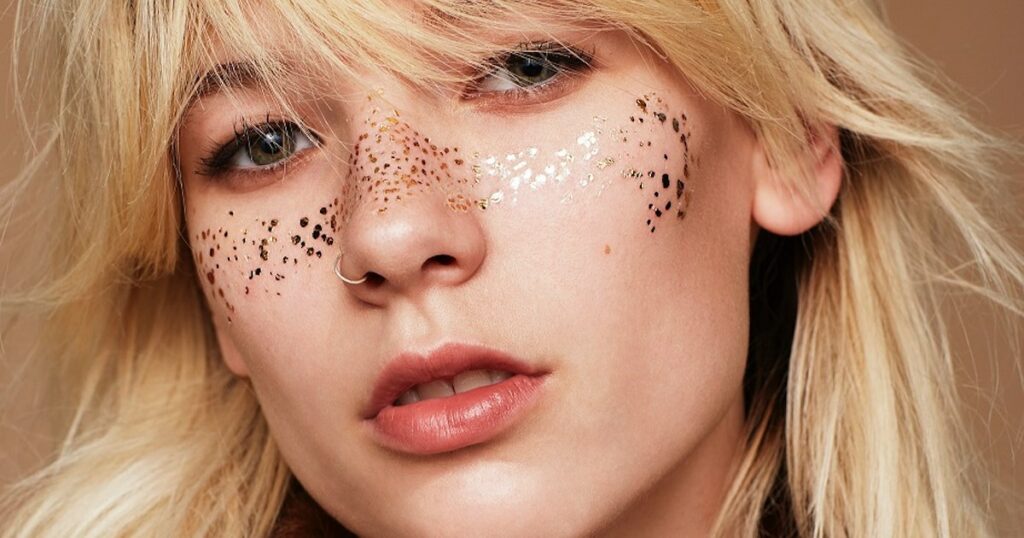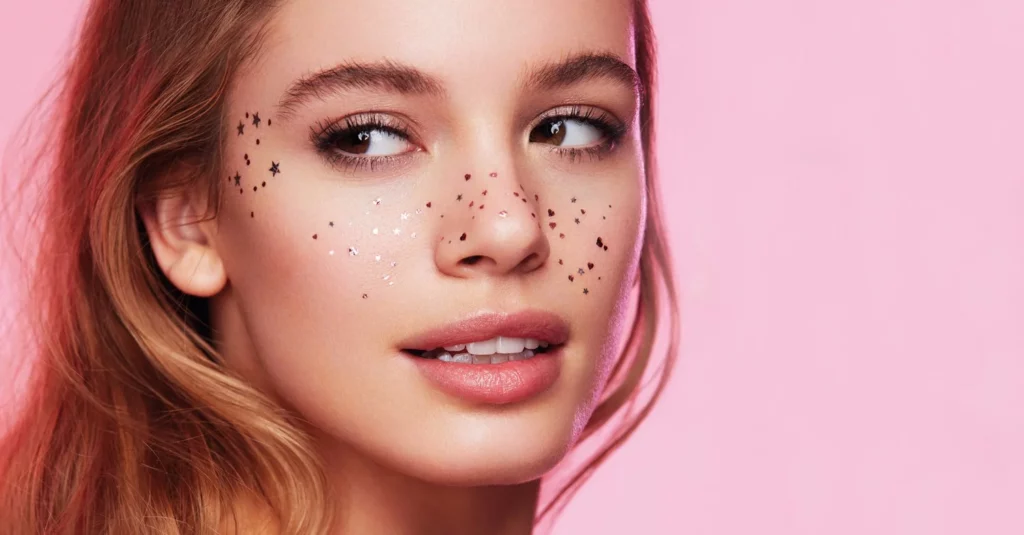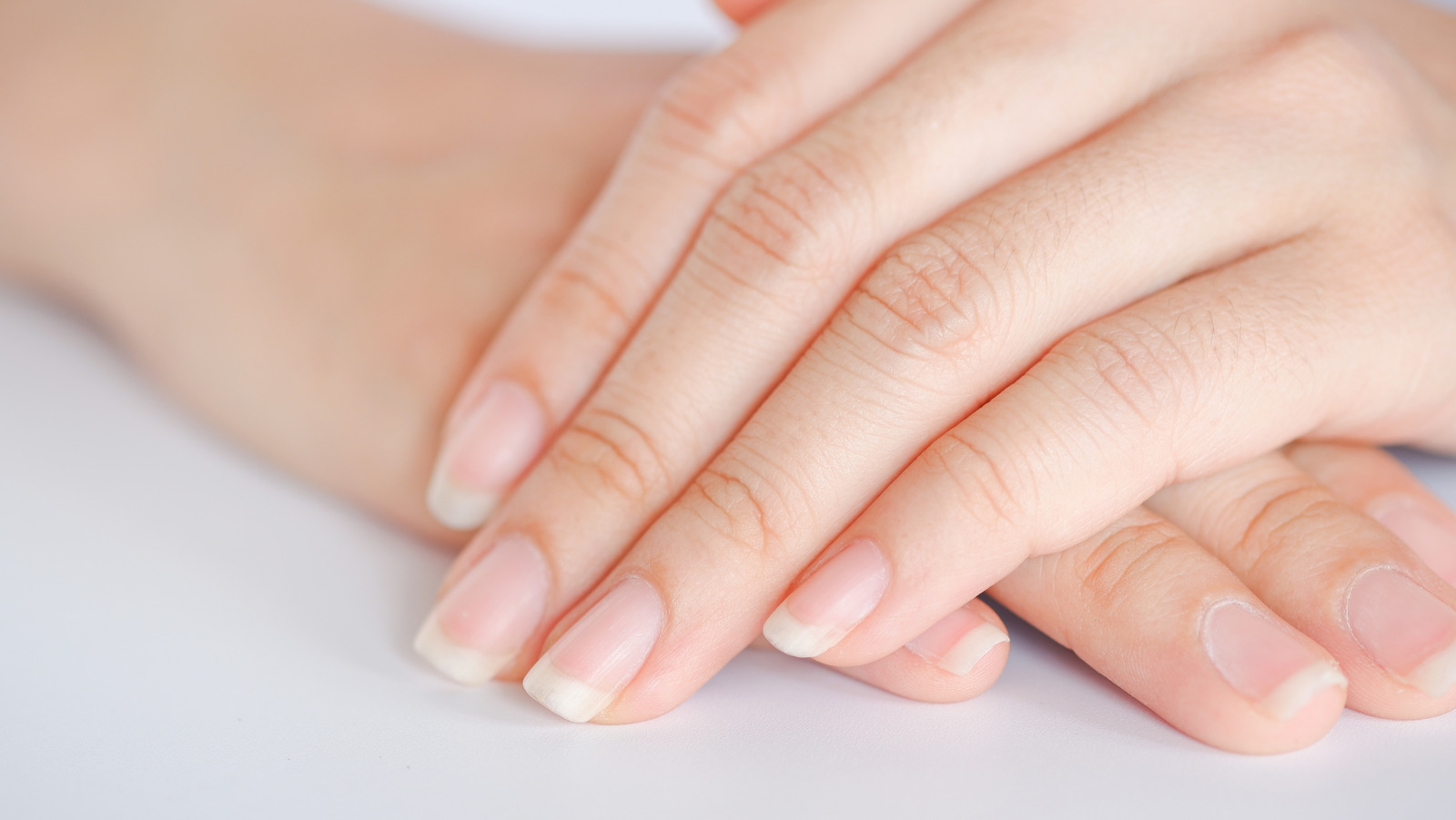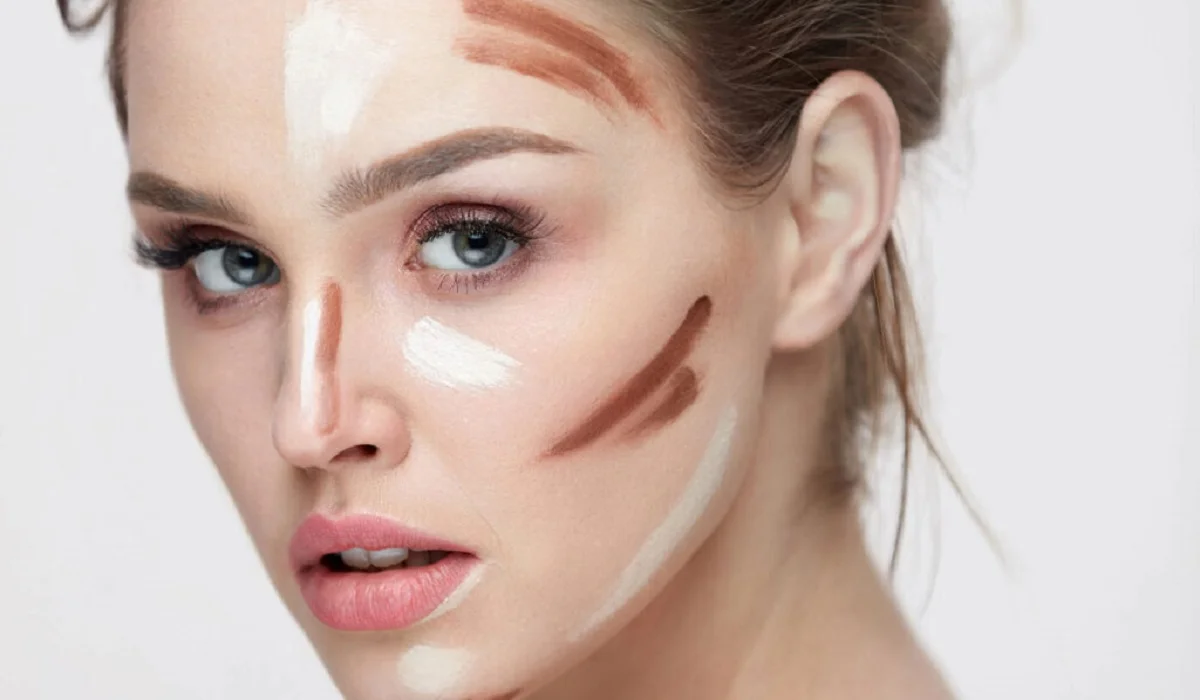
Trends emerge and attract enthusiasts in the beauty and cosmetics world constantly, expanding boundaries and breaking conventional standards. One such enthralling trend that is making waves these days is metallic freckles; unlike natural sun-kissed marks associated with summer, metallic freckles add luminosity and playfulness into makeup application – this article delves deep into their history, application techniques and artistic influence within beauty trends.
Metallic Freckles Trend Origin
While freckles have always been celebrated as distinctive features that add character and depth to an individual’s beauty, the metallic freckles trend takes them even further. Driven by creativity and self-expression, metallic freckles allow makeup enthusiasts to experiment with new looks while adding an air of fantasy into their makeup regimens.
Materials and Formulations
Metallic freckles can be achieved using products specifically tailored to add shimmering and reflective qualities to the skin, such as freckle pens, metallic liquid eyeliners or specially-formulated metallic pigments. Their lightweight formulation allows for easier application while the metallic finish adds glamour and depth to this aesthetic.
Applying Metallic Freckles
Achieving perfect metallic freckles requires delicate hands and artistic vision – here is our step-by-step guide on how to accomplish this captivating look:
Prep Your Skin: Begin by starting off with clean, moisturized skin. A primer may help create an ideal surface to adhere metallic freckles on, creating an easy application process and seamless results.
Choose Your Products: Select metallic freckle products in shades that enhance or contrast with your skin tone for best results. Gold, rose gold and silver tend to be popular choices among customers but there’s plenty more options out there that suit individual taste!
Decide the Placement
Determine where you would like the freckles to appear – areas such as the bridge of your nose, along with cheeks or even your forehead are popular options – however remember to use creativity when choosing their placement and adapt it according to what works for your desired look.
Precision in Application
Use either the applicator included with your metallic freckle product, or use a fine-tipped brush, for precision application of metallic freckle products. Gently dot spots of product onto targeted areas by lightly dotting; vary size and spacing to create natural but whimsical effects.
Blend for Naturalism: To avoid an artificial look, lightly tap freckles with your clean fingertip or makeup sponge so as to blend them seamlessly with the skin tone and achieve naturalistic aesthetic. This step will ensure seamless integration into your natural complexion.
Layer for Intensity:
Metallic freckles offer the advantage of being easily buildable; gradually layer product until reaching your desired level of luminosity and shimmer.
Make Your Metallic Freckles Stay Put:
Finish the look off right by spraying setting spray to secure metallic freckles throughout the day and give a radiant finish. Not only will this step extend their longevity but will add an eye-catching shimmer.
Celebrity Influence and Red Carpet Glamour:
Metallic freckles’ rise has been greatly amplified due to the increasing influence of celebrities embracing this beauty trend on red carpets and social media platforms like red carpets. Makeup artists working for A-Listers have expertly integrated metallic freckles into A-Lister make-up routines – elevating this beauty trend further into glamorous territory. Celebrities such as Rihanna, Zendaya, Lucy Boynton have all sported metallic freckles as fashion statement fashion statements which further solidifies its status among fashion-forward beauty statements.
Versatility in Styling: Metallic freckles offer incredible styling flexibility. This trend easily adapts to different aesthetics, giving individuals an array of styling choices tailored to meet their own aesthetic preferences – be that pairing this trend with minimalist makeup for subtle flair, or mixing in it into bold and avant-garde ensembles for full self-expression – metallic freckles provide an exquisite way to express oneself!

Metallic Freckles in Everyday Makeup:
Although metallic freckles might seem reserved for special events or editorial shoots, you can easily incorporate this trend into everyday makeup routine for an eye-catching yet subdued effect. Consider these tips for creating this effectful yet subtle look:
Opting for Subdued Metallics: To create a more subdued metallic effect that works well for everyday wear, choose subdued shades like champagne and subtle bronze to achieve more subdued metallic effects.
Focus on Specific Areas:
For added sophistication without overtaking the overall appearance, try applying metallic freckles only in selected spots such as outer corners of eyes or cheekbones to add an attractive flair without overwhelming them all.
Combine with Traditional Freckles: Combine metallic freckles with traditional freckles for an appealing combination of texture and luminosity that still maintains naturalistic charm while taking advantage of trend. This approach ensures you maintain a timeless beauty look while taking part in today’s makeup trend!
Color Play:
Play around with color! Explore its spectrum of metallic shades available, playing around with different hues to reflect your mood or outfit. Purples, blues or greens may bring an artistic vibrancy that brings vibrancy into any look!
Metallic Freckles as Art:
More than simply being trendy, applying metallic freckles is an act of creativity and artistic self-expression. Makeup enthusiasts and artists have taken up this trend as a means of breaking norms around beauty by becoming both artists and pieces in this process of self-expression; creating metallic freckles allows oneself to become both the artist and masterpiece, giving way to empowerment and artistic freedom through this creative outlet.
Challenges and Considerations for Metallic Freckles: While metallic freckles offer a striking and transformative beauty experience, there are certain issues you should take into account before beginning this transformational treatment:
Skin Sensitivity: Individuals with sensitive skin should pay careful consideration to the ingredients in any metallic freckle products they purchase, with hypoallergenic formulations that have been dermatologist-tested being best options to reduce irritation risks.
Removal Process: Successfully eliminating metallic freckles requires an intensive yet gentle cleansing routine, using products like micellar water or oil-based cleansers which work by dissolving their metallic pigments without creating undue stress on your skin.
Product Quality:
For maximum effectiveness and radiant skin results, invest in high-grade metallic freckle products of superior quality to ensure seamless application and radiant effects. Cheaper options may not provide this desired effect and could contain ingredients which could irritate sensitive skin types.
Redefining Beauty Through Metallic Freckles: Within the ever-evolving landscape of beauty trends, metallic freckles stand out as an embrace of individualism and creativity. Going beyond conventional boundaries of makeup application, metallic freckles encourage individuals to experiment with new forms of self-expression while harnessing cosmetics’ transformative powers for personal gain. Whether worn for special events or used daily in routine activities – metallic freckles provide an exciting canvas to create their own definition of beauty on their terms!







